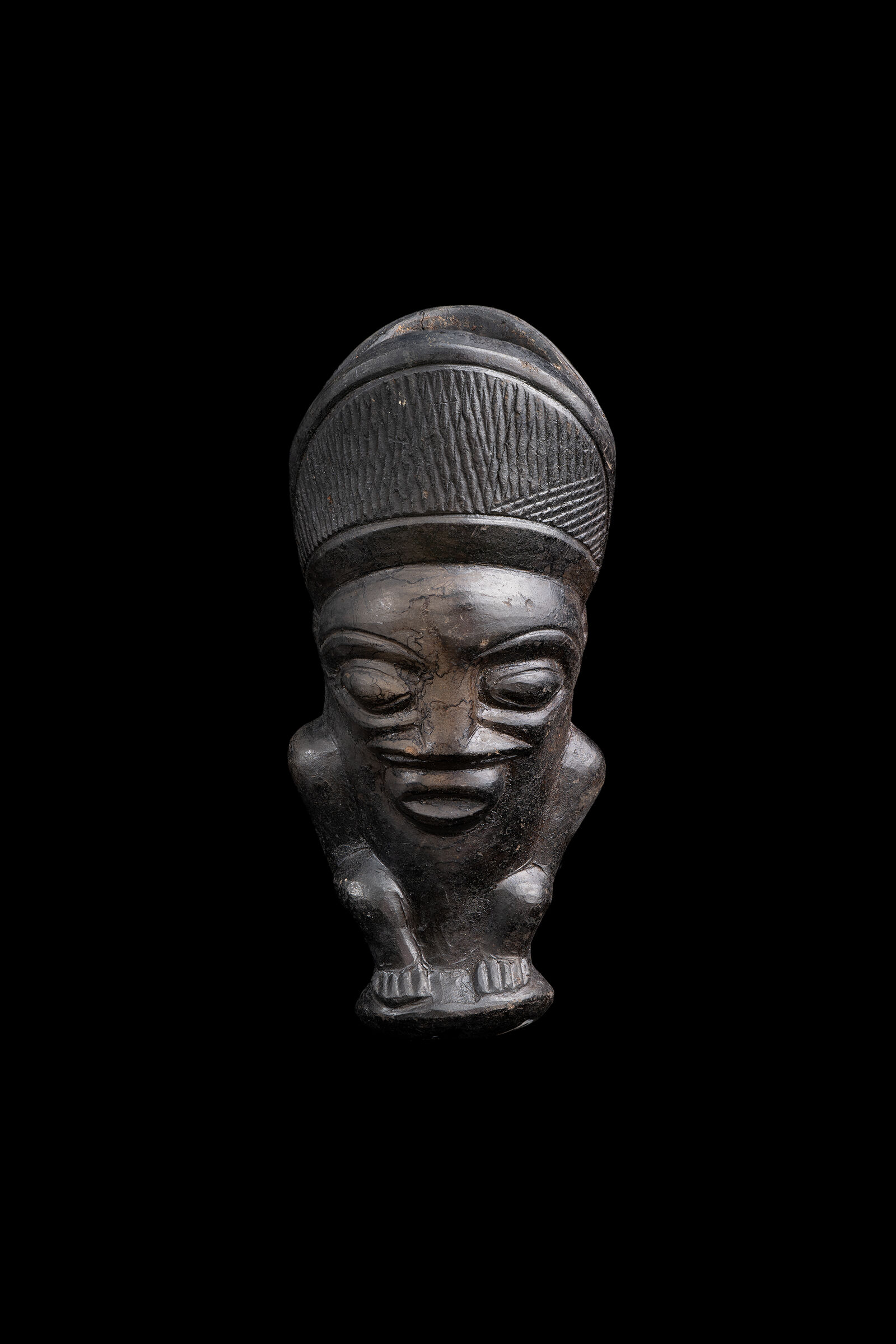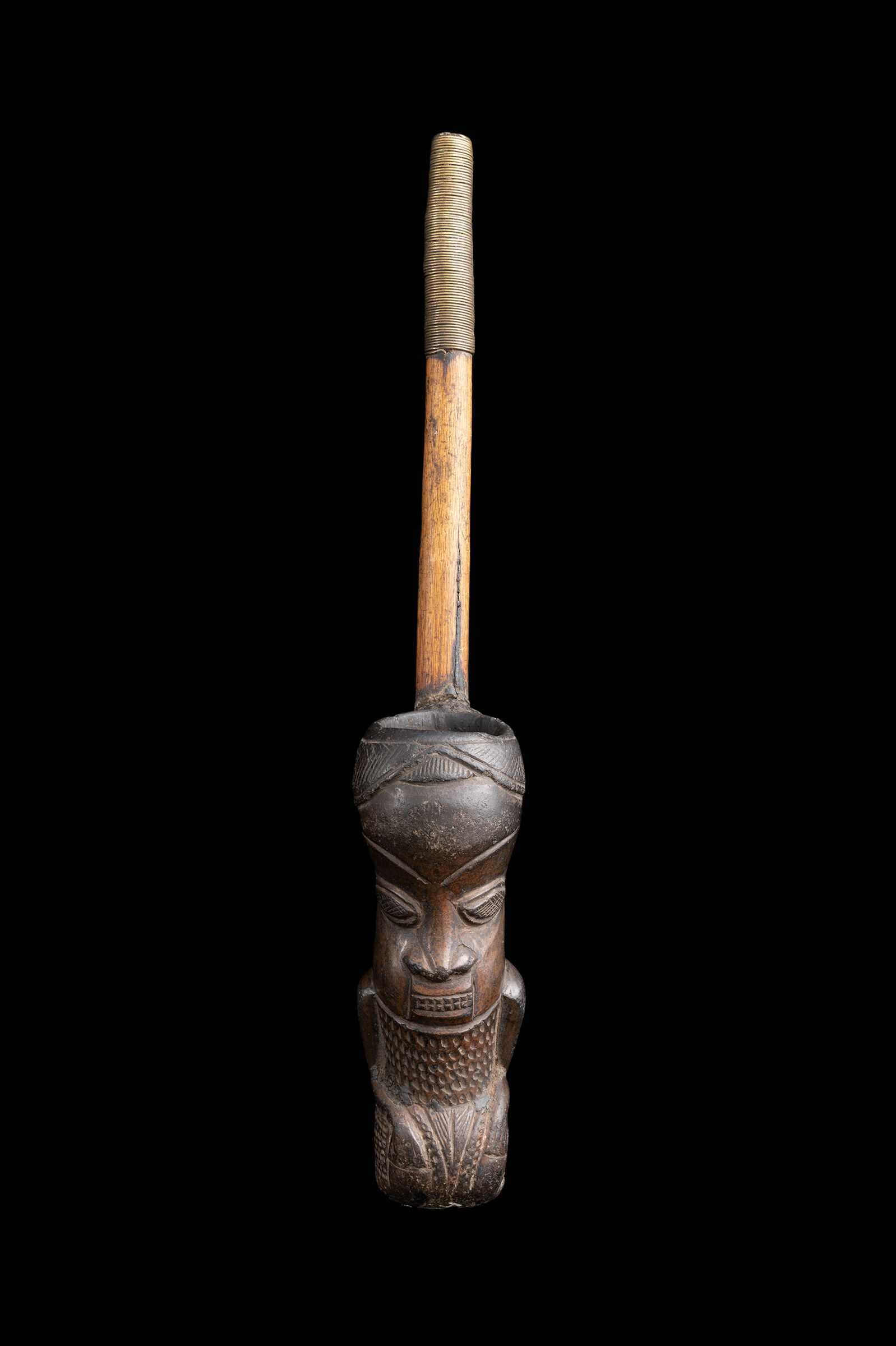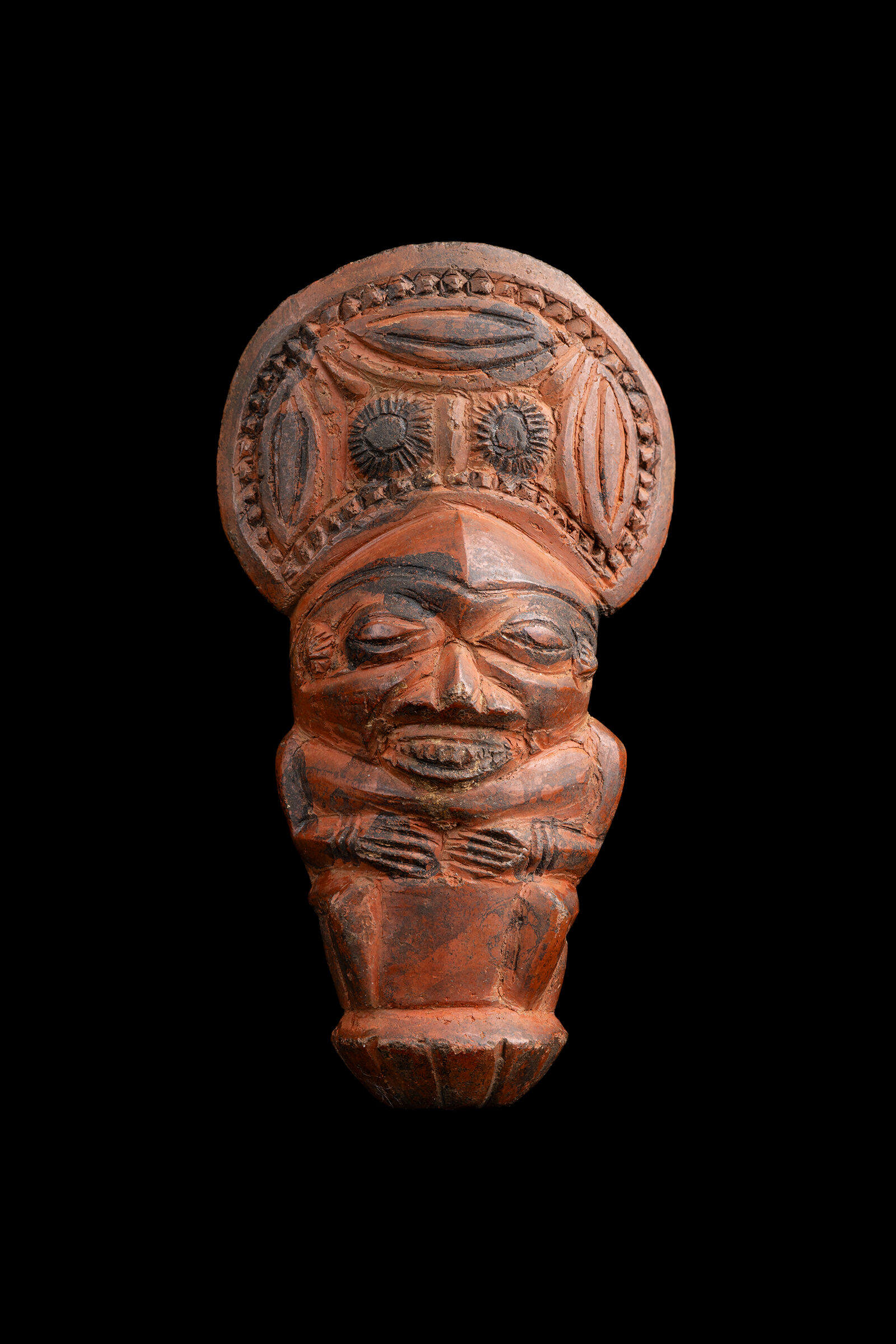Prominently standing in the center of this hexagonal composition is a crouching brown figure holding its arms between its head and knees. Although to some degree simplified, the object can be identified as a ceramic pipe bowl from the Bamum Kingdom of western Cameroon that Schmidt-Rottluff held in his private collection of colonial objects.
Artists from the Bamum Kingdom were celebrated in their time for the exceptional quality of their ceramic art. It is important to acknowledge those artists and their work and to interpret the objects in light of the changing colonial politics and the manifold motivations for dispersing them in collections far from their origins. From 1884 to 1919, the Bamum Kingdom, as well as other large areas of Africa and Asia, were colonized by the German Empire. Colonial collections were often acquired through military campaigns, raiding, and looting; the Benin Bronzes are a notorious example. While taking place in a colonial framework, the exchange between the German Empire and the Bamum Kingdom was less violent. It seems fair to assume that the pipe bowl in Schmidt-Rottluff’s possession did not leave the kingdom against the will of its Mfon (King) Ibrahim Njoya. The rapid surge of Bamum artwork in Germany, particularly between 1902 and 1915, was facilitated by the importance of gift exchange in Bamum culture. Njoya’s strategy of accommodation and alliance with the new power also helped fulfill his own political ambitions. A wealth of photographs attests to many diplomatic missions and gatherings between the Germans and the Bamum nobility.
Although pipes with anthropomorphic features were permitted to be used only by noblemen, such as members of the royal family—because the imagery represents leadership and reminds viewers of the kingdom’s social hierarchy—they were also presented as gifts and sold to the delegates and institutions of the empire. To meet rising demands, Njoya increased workshop production. Consequently, the Bamum Kingdom held a prominent place in the German colonial imagination from the first official encounter between the two groups in 1902 until the expulsion of German nationals from the colonies in 1915.
In the regions of the German Empire across Asia and Africa, human remains, natural resources, and countless objects and artworks were removed, often through coercion or violence. The objects were brought to political and cultural centers such as Berlin and Dresden, where colonial displays and museums were established to shape the German people’s relationship to “its” overseas territories. To maintain and stabilize existing power structures, this relationship replicated the racism that is colonialism’s foundation.
As a result of the increasing presence of colonial visions of African cultures, artists of the German expressionist group Die Brücke (The Bridge), such as Ernst Ludwig Kirchner, Max Pechstein, and Schmidt-Rottluff, became interested in such colonial objects and even started their own collections. Schmidt-Rottluff owned not only Bamum pipe bowls but many other artworks, of which 100 remain in Berlin’s Brücke Museum. The painter was fascinated by Bamum artists’ ability to capture the human form with just a few skillfully carved lines. He surrounded himself with these objects and kept returning to them as source material for his still lifes and as stylistic models for portraits. For example, the solidity of form and the character of the linework in the woodcut Mother (1916) resembles the carving in the pipe bowl.






